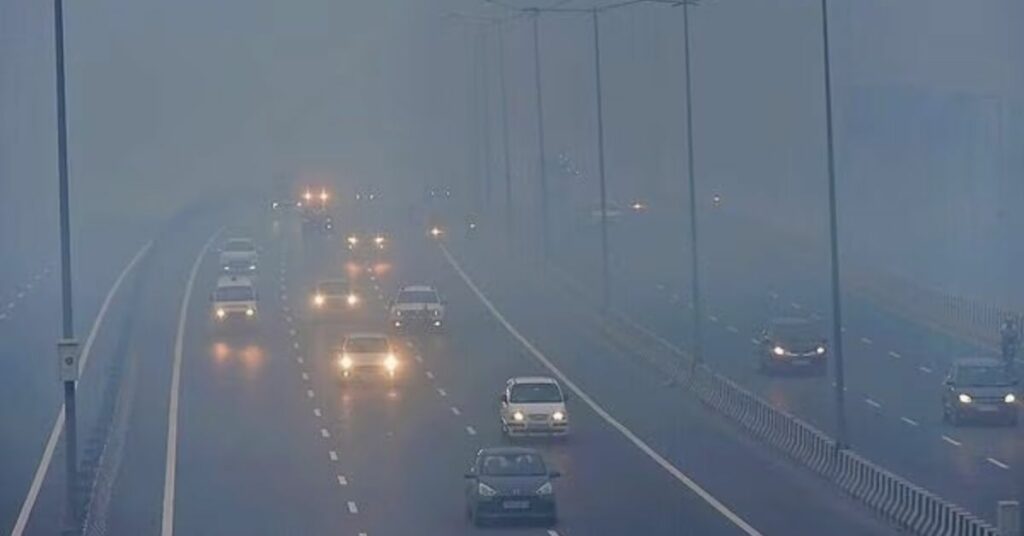Delhi, NCR Air Pollution: As the dawn breaks over the sprawling cityscape of Delhi, a thick veil of toxic haze stubbornly clings to the skies, signaling yet another day of environmental distress for its residents.
The capital city of India, home to more than 19 million souls, is grappling with an air quality emergency that has locked the region in a chokehold of pollution. The air quality index (AQI), a barometer for measuring air cleanliness, has breached the ‘critical’ threshold, according to the latest data from the System of Air Quality and Weather Forecasting and Research (SAFAR)-India.
The present predicament isn’t an abrupt onset but the climax of a series of deteriorating days. Pollution levels have been consistently categorized as ‘critical’ over the past few days, with AQI readings in the perilous ‘400’ range across several locales within and skirting the metropolis. As of Monday morning, the average AQI has surged to an alarming 471, casting a shroud of smog that imperils the health of millions.
#WATCH | Uttar Pradesh: Taj Mahal in Agra engulfed in a layer of haze today amid the rise in air pollution levels.
(Visuals shot at 9:35 am today) pic.twitter.com/VWFXeX3CFz
— ANI (@ANI) November 6, 2023
This environmental exigency has prompted decisive action from the state government, which has implemented a ‘work from home’ directive for 50% of its government workforce. This measure is not just an immediate response to the current crisis but a part of a broader pollution control strategy to mitigate the ongoing disaster.
The trend of increasing pollution is a narrative of numbers that evoke concern. The Central Pollution Control Board’s data exhibits a sharp increase in Delhi’s air quality index by over 200 points since late October. The peak of this surge was registered on November 3rd, surpassing the previous high recorded on November 12, 2021. While there has been a slight improvement attributed to better wind speeds, the toxic haze remains an unyielding presence.
Gopal Rai, Delhi Environment Minister, in a letter to Union Environment Minister Bhupender Yadav, highlighted the urgency of the situation. He advocated for immediate restrictions, permitting only CNG, electric, and BS VI-compliant vehicles to operate within the Delhi-NCR region. This proposal, especially ahead of the Diwali festival, is not only a preventive measure but also a clarion call for a sustainable future.
Amidst this environmental calamity, Delhi’s weather patterns have been anomalous, with the minimum temperature plummeting to 13.5 degrees Celsius, below the season’s average. The relative humidity stands at a staggering 98 percent in the early morning hours, exacerbating the pollution problem.
The forecast for a clear sky, with an anticipated maximum temperature of 31 degrees Celsius, offers little solace. The current conditions suggest that while the weather may lean towards clear skies, the air quality in several parts of the city persists in the severe plus category.
This ongoing battle with pollution in Delhi is more than a seasonal affliction; it’s a wake-up call to the imminent need for robust environmental policies and public participation in combating air pollution. As the city awaits live updates on the air pollution crisis, one thing remains clear: the need for immediate, decisive action is critical, and the time for change is now.
Read more articles
- Empowering Girls: Himachal Pradesh Increases Incentives for Indira Gandhi Balika Suraksha Yojna
- Delhi CM Arvind Kejriwal Defies ED Summon for Excise Policy Case, Opts for Roadshow Instead
As we continue to monitor the situation through “Delhi, NCR Air Pollution LIVE News Updates,” let’s not forget that each update is not just a number but a marker of the health and future of millions of residents of this historic city. The resolve of the authorities and the adaptability of the citizens are both on trial, as Delhi navigates through one of the most challenging environmental ordeals of our time.

